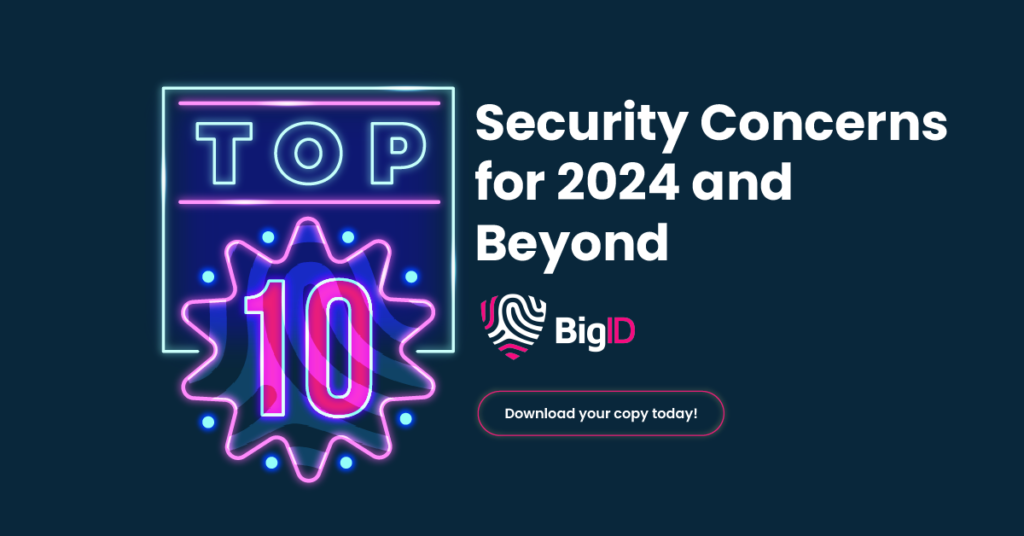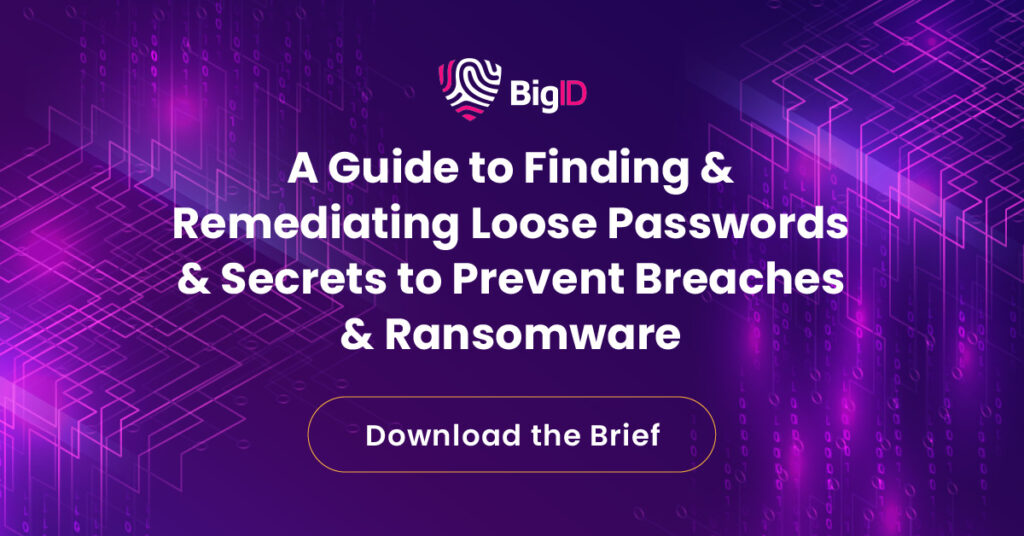Defining Data Loss Prevention (DLP)
Data loss prevention (DLP) is a security strategy that allows your organization to control how sensitive data can be shared across networks and endpoint devices.
Enterprise DLP solutions identify, monitor and protect:
- Data in use (data in motion)
- Data at rest (data not being actively used)
- Data in process (data being stored or processed on a system)
These solutions can prevent unauthorized users from accessing intellectual property, customer information, and other types of sensitive information. This is especially important given the increasing number of ways sensitive data can be exposed through social media, mobile devices, and cloud applications.
Data loss prevention programs are widely used in industries like healthcare, financial services and government agencies. However, they can be used by any company with sensitive data to protect — including retail businesses, education providers and even individuals with personal information on their computers or other devices.
Types of Data Threats: Causes of Data Leakage
As a business, you must protect your data against various types of security threats. Understanding these threat vectors is crucial for implementing an effective DLP program.
Cyberattacks
Cyberattacks are deliberate attempts by hackers to gain unauthorized access to systems and data. They can take many forms, including SQL injection, denial of service (DoS), and brute force attacks, all of which exploit vulnerabilities to steal or damage data.
Malware
Malicious software, or malware, comes in many forms, such as viruses, worms, and Trojans. Once installed, malware can corrupt, steal, or delete sensitive data. It may also spread to other systems within the network.
Insider Risks
An insider threat is any action or event that results in unauthorized access to, disruption of, or destruction of information systems or assets. an insider within an organization, employees, contractors, or business partners — leaks sensitive information to unauthorized third parties.

Unintentional Exposure
Humans are far from perfect and are the most common reason for data leaks — almost 75% of cyber incidents are caused by negligence or poor cyber hygiene. Unintentional exposure occurs when sensitive information is inadvertently made accessible to unauthorized individuals. This can happen through misconfigured databases, improper data handling, or accidental sharing of data in public forums or unsecured channels.
Organizations’ use of social media, mobile devices, and cloud applications has introduced several new vulnerabilities that make it easier for employees to accidentally share proprietary data with the public.
Phishing
Phishing attacks deceive individuals into providing personal data, such as login credentials or financial details. Attackers use emails, fake websites, or messages that appear legitimate to trick recipients into disclosing confidential data. Often, this stolen data is used to gather more information, which is then used for bigger breaches.
Ransomware
Ransomware is a form of malware that encrypts the victim’s data. The threat actor then demands payment for the decryption key.
These attacks can paralyze an organization by locking critical data and systems and lead to significant financial and operational impacts.
Understanding the different types of data threats enables you to better defend against data breaches and ensure robust security practices. Implementing comprehensive DLP solutions can help mitigate these risks and protect sensitive information from unauthorized access and exposure.
How Does DLP Work?
A DLP solution scans, detects, monitors, and protects proprietary data to prevent unauthorized access, sharing, or leaks. It works by discovering and classifying sensitive data across endpoints, networks, and cloud environments.
Your organization defines policies and rules that the system enforces to control data handling. The data leakage prevention software compares data against this list of rules.
For example, you could create policies based on the content of messages. If your company has confidential information about its clients, you could block certain words like “client” or “confidential.”
Once you’ve created some policies for your DLP, it will work behind the scenes. It’ll use your rules to identify any unauthorized transmissions or storage of sensitive information and prevent them from happening.
The solution also continuously monitors data in use, in motion, and at rest, detecting and flagging policy violations. Automated responses, such as blocking transfers or encrypting data, help mitigate risks.
Your DLP solution also provides alerts, reports, and auditing capabilities to ensure regulatory compliance and policy adherence.
Data loss prevention software can be installed on computers, laptops, and tablets. It gives you visibility into your data and prevents it from leaving the device without authorization.
It can also be used as part of an email service provider’s security suite, analyzing incoming and outgoing emails for sensitive information.

Types of Data Loss Prevention Strategies
Storing sensitive data is no longer done on local machines and networks. We live in a world where structured and unstructured data is stored not just on-premise but also on the cloud. It’s often shared over networks. As a result, your risk of data exposure grows. Therefore, you need to implement appropriate DLP strategies tailored to different environments to protect sensitive data.
Here are the three primary types:
Network DLP
Network DLP solutions monitor and secure data in motion across your organization. They inspect network traffic to detect sensitive data transfers, and prevent unauthorized or accidental data loss. These data loss prevention solutions ensure that sensitive information is not sent outside the organization’s perimeter without proper authorization. They can block, quarantine, or encrypt data transmissions based on predefined policies.
Endpoint DLP
This form of DLP focuses on protecting data on endpoints, which are end-user devices, such as laptops, desktops, and mobile devices. This strategy involves monitoring and controlling data at the device level to prevent unauthorized access, use, or transfer of sensitive information. Endpoint DLP solutions can restrict actions like copying data to USB drives, printing confidential documents, or uploading files to unauthorized cloud services.
Cloud DLP
With the increasing adoption of cloud services, it’s crucial to prevent data loss from the cloud. Cloud DLP solutions safeguard data stored and processed in cloud environments, where they monitor and control access, usage, and sharing. They enforce security policies and prevent data theft in cloud-based ecosystems, applications, and services.
The Importance of Data Leakage Prevention
DLP is crucial for safeguarding sensitive information and ensuring regulatory compliance. It helps your business prevent unauthorized access, sharing, and leakage of confidential data. That helps protect your intellectual property and maintain customer trust.
Through continuous monitoring, these solutions detect potential threats and enforce security policies to mitigate risks. Implementing DLP also helps you comply with data protection regulations like GDPR and CCPA to reduce the likelihood of costly data breaches and legal penalties. In essence, DLP is vital for maintaining data integrity, security, and organizational reputation.
Your organization needs more modern and intuitive data loss prevention. Many businesses have implemented DLP to help them protect their sensitive information from leaving the company’s control. Still, many more are considering it because they’re worried about being fined for noncompliance with GDPR regulations.
And, fines aren’t the only way illicit transfer of data outside your business can cost you.
Cost of a Data Leak
The estimated loss to businesses through cyberattacks is supposed to be 9.5 trillion USD in 2024, rising to 10.5 trillion USD in 2025.
Unauthorized access to data can be extremely costly for your business. It impacts both financial and reputational aspects. The average cost of a data breach includes expenses related to detecting and responding to the breach, legal fees, regulatory fines, and notifying affected individuals.
Additionally, you may face significant losses due to business disruption, customer churn, and damage to brand reputation. Investing in robust data protection measures, including DLP solutions, can help mitigate these risks and reduce the potential costs associated with data breaches.
DLP Best Practices
Implementing data loss prevention effectively requires a strategic approach. Here are some recommended guidelines to enhance your DLP efforts:
Identify and Classify Sensitive Data
Begin by identifying and classifying sensitive data within your organization. Understand what data is most critical and where it resides. Categorize it according to sensitivity levels to prioritize protection efforts.
Develop Comprehensive Policies
Establish comprehensive DLP policies defining how data should be handled, shared, and protected. Ensure these policies are aligned with regulatory requirements and industry standards.
Educate and Train Employees
Regularly train employees on security practices and the importance of DLP. Ensure they understand the policies and procedures, and also how to recognize and respond to potential threats.
Utilize Encryption and Access Controls
Implement strong encryption methods to secure data both in transit and at rest. Use access controls to ensure only authorized personnel can access sensitive information, and regularly review permissions.
Monitor and Respond to Data Loss Incidents
Continuously monitor data access and transfer activities to promptly detect and respond to potential security incidents. Implement automated alerts and response mechanisms to address violations swiftly.
Regularly Review and Update Policies
DLP policies and strategies should be regularly reviewed and updated to adapt to new threats and changes in the organizational environment. Conduct periodic audits to ensure compliance and effectiveness.
By following these best practices, you can enhance your data protection measures, reduce the risk of data breaches, and ensure compliance with data privacy regulations.
Trends Driving DLP Adoption
Rise in Data Breaches
The increasing frequency and sophistication of cyberattacks drive the need for robust DLP systems to protect sensitive information from unauthorized access and theft.
Expanding Role of CISOs
Chief Information Security Officers (CISOs) are playing a more critical role in information protection strategies. They are emphasizing the importance of comprehensive DLP measures to safeguard organizational data.
Compliance Mandates
Evolving regulatory requirements like GDPR and HIPAA mandate stringent data protection practices. DLP solutions help you stay compliant and avoid hefty fines.
Complexity of Data Environments
The proliferation of cloud services and complex supply chains necessitates advanced DLP strategies to protect data across diverse and distributed environments.
High Value of Stolen Data
The lucrative nature of stolen data highlights the need for effective DLP solutions to prevent data breaches and protect valuable information assets.
Cybersecurity Talent Shortage
The scarcity of skilled cybersecurity professionals underscores the importance of automated and efficient DLP systems to mitigate risks and ensure data security.
Combine BigID With Your DLP Solution For Comprehensive Data Security
Often, prevention is better than a solution. Choosing a DLP tool to work in tandem with BigID’s Access Intelligence App helps you highlight vulnerable and high-risk data at a glance, uncovering vulnerabilities so you can prioritize remediation efforts to secure them.
We allow you accelerate DLP through consistency, coverage, and accuracy while alleviating your tool’s burden. Our solution standardizes sensitivity classification definitions for your organization to consistently enforce policies and controls across all of your information, regardless of where it lives.
Our platform provides hundreds of OOB classifiers and customizable ML-based classifiers to categorize more data more accurately and at scale. This enables the pre-remediation of your data to prevent unauthorized or unintended loss.
Would you like to learn more about how BigID’s Data Intelligence platform can help bridge the gap between your DLP tools?


